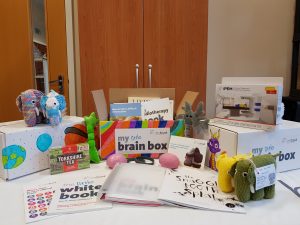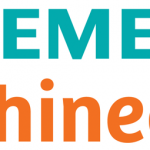The Little brainstrust brain box project
A Yorkshire primary school have teamed up with little brainstrust to help with a brain box project. 30 Key Stage 2 pupils helped to decorate brain boxes that will be sent out to children diagnosed with a brain tumour.
500 children are diagnosed with a brain tumour every year in the UK. When a child is diagnosed, it impacts the whole family. Little brainstrust tailor each brain box specifically to the family who requested it, and the box is filled with carefully chosen resources best suited for the whole family. A brain box is an invaluable toolkit of information to help families feel well-resourced at an incredibly confusing and isolating time.
Russell Hall pupils support their classmate

In autumn, Little brainstrust launched a project, and asked schools to help decorate some brain boxes. When the opportunity arose to partner Little brainstrust as part of this project, Russell Hall Primary School jumped at the chance. The school, based in Queensbury, West Yorkshire, know only too well how a brain tumour diagnosis can affect the life of a child and their family. Amelia, a student at the school, was diagnosed with a brain tumour in early 2018.
Vicky Robinson, Amelia’s mum, said ‘When I heard that Little brainstrust were asking for schools to be involved in their brain box project, I knew
 instantly that Amelia’s school would like to get involved. The school have been a constant source of support for us whilst dealing with Amelia’s diagnosis and subsequent treatment. Everyone has been rooting for Amelia and have all welcomed her back to school with such care and compassion.’
instantly that Amelia’s school would like to get involved. The school have been a constant source of support for us whilst dealing with Amelia’s diagnosis and subsequent treatment. Everyone has been rooting for Amelia and have all welcomed her back to school with such care and compassion.’
When Amelia’s family received their brain box, it was a real help. ‘The brain box was gratefully received when we found out Amelia had a brain tumour, and it made us feel like we weren’t alone. Having the children at her school decorate the boxes for other children and parents to receive was amazing. Thank you to the children who took great care in decorating the boxes, they have put such care into thinking about making other children in Amelia’s position happy. I want to thank Little brainstrust and all the staff, parents and children of Russell Hall Primary School for all of the support they have given us, we are truly grateful’
‘A practical way to show our support’

From 5th-16th November 2018, pupils kindly gave up 30 mins of their lunchtime each day to decorate the brain boxes with drawings of characters such as Harry Potter, SpongeBob SquarePants and The Simpsons.
Russell Hall’s Headteacher Andrea Grist said ‘When Little brainstrust approached us to see if we would like to be involved in the brain box project, I instantly agreed. We wanted to show our support for Amelia and her family by doing something practical. It gave us a chance to talk to the children in school about Amelia’s condition and within a day I had 30 volunteers to join the brain box club. I know from personal experience how important it is to get the right support and information when a family member is diagnosed with a serious condition, as my husband was diagnosed with a brain tumour 18 months ago. I hope that the decorated brain boxes bring a little bit of joy and a lot of hope to families at such a difficult time’
Thanks to the children at Russell Hall Primary School, children coming to terms with a brain tumour diagnosis across the UK will receive these brightly and brilliantly decorated brain boxes. As well as providing a brain box, Little brainstrust support children and their families by offering continuous support over the phone or email. We offer a listening ear for families to talk freely. Little brainstrust recognises that families give invaluable support to each other and for this reason, we love to organise family days our for everyone to have a day out on Little brainstrust. Keep an eye on our Meetup website for upcoming events.












